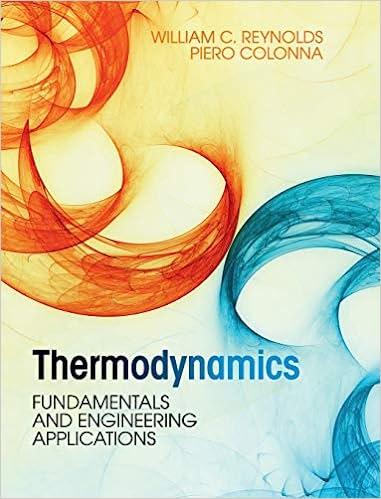Answered step by step
Verified Expert Solution
Question
1 Approved Answer
4 ( a ) Define chemical potential and state the requirements for when a ( chemical ) reaction reaches chemical equilibrium. ( 4 marks )
a Define chemical potential and state the requirements for
when a chemical reaction reaches chemical equilibrium.
marks
b Starting from the definition of the Gibbs energy, derive the
fundamental property relation for a closed
system.
marks
c Develop and extend the fundamental property relation for
the Gibbs energy above to give the GibbsDuhem
equation. Explain the significance of the GibbsDuhem
equation for binary two component mixtures.
marks
d The Haber process for the production of ammonia requires
the following reaction
The standard Gibbs free energy change, for this
reaction at and bar is of
What is the change in Gibbs energy, for this reaction
at partial pressures of MPaN, and
MPa Is the reaction at equilibrium or does it
proceed in the forward or reverse directions? You may
assume that the components form an ideal gas.
marks

Step by Step Solution
There are 3 Steps involved in it
Step: 1

Get Instant Access to Expert-Tailored Solutions
See step-by-step solutions with expert insights and AI powered tools for academic success
Step: 2

Step: 3

Ace Your Homework with AI
Get the answers you need in no time with our AI-driven, step-by-step assistance
Get Started


